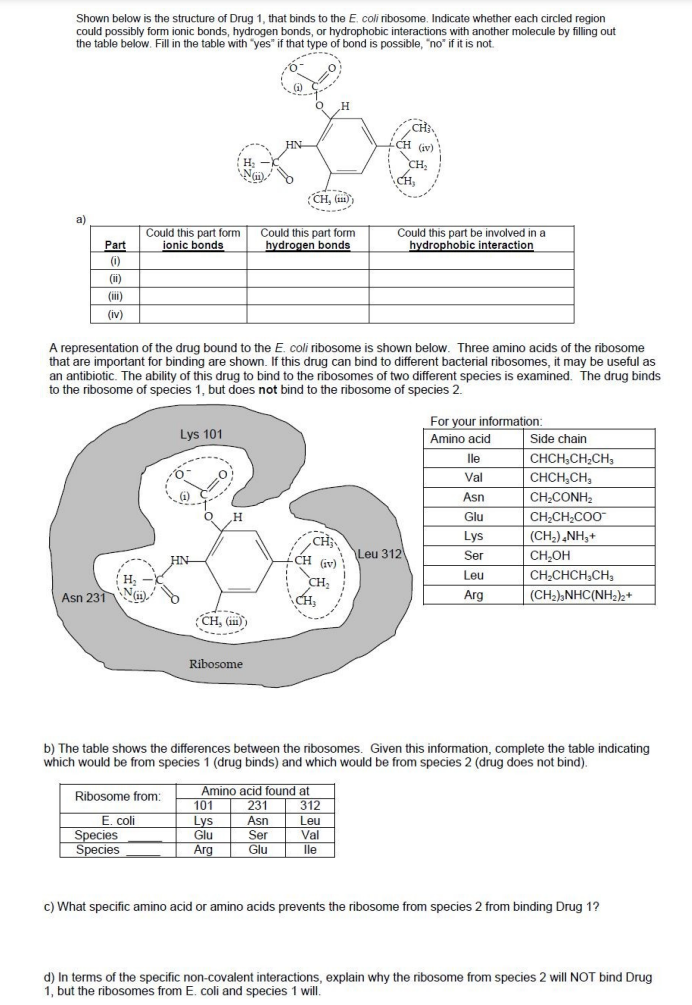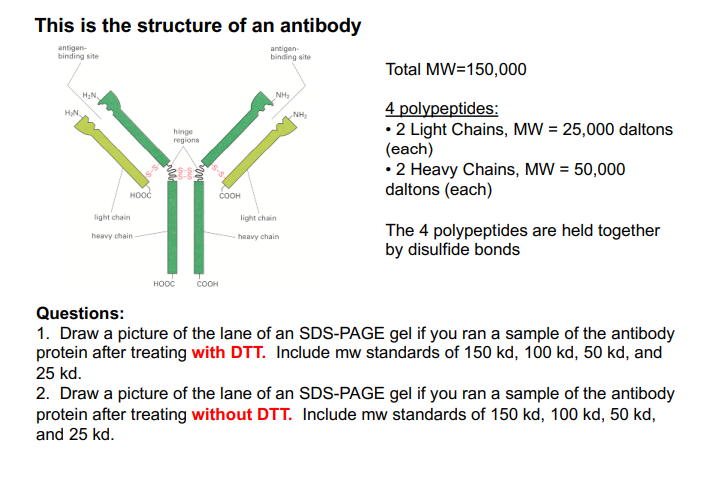Shown below is the structure of Drug 1, that binds to the E. coli ribosome. Indicate whether each circled region could possibly form ionic bonds, hydrogen bonds, or hydrophobic interactions with another molecule by filling out the table below. Fill in the table with "yes" if that type of bond is possible, "no" if it is not. Part (1) (11) (II) (iv) Could this part form ionic bonds HN H (CH, (mm) Could this part form hydrogen bonds CHI CH (iv) CH₂ Could this part be involved in a hydrophobic interaction
could you explain to me in detail how to work out these problem! thanks


Since, you have asked multiple questions from multiple concepts, we have answered all 4 subparts of first question. Kindly post the other questions separately to get it answered. Thanks.
Amino acids can interact with drugs in several ways. Some of the most common types of interactions include:
-
Hydrogen bonding: This type of interaction occurs when the positively charged hydrogen atoms on an amino acid bond with the negatively charged atoms of a drug molecule.
-
Ion pairing: This interaction occurs when the positively charged amino acid residues form an ionic bond with the negatively charged drug molecules.
-
Hydrophobic interaction: This interaction occurs between hydrophobic amino acid residues and hydrophobic regions of drug molecules, which can cause the drug to become trapped within the protein structure.
-
Van der Waals interaction: This interaction occurs between the nonpolar regions of amino acids and drugs and is driven by the attraction between the temporary dipoles in the molecule.
-
Covalent bonding: This interaction occurs when a covalent bond is formed between the drug molecule and the amino acid residue, typically through a reaction between the drug molecule's electrophilic center and the nucleophilic center of the amino acid residue.
Trending now
This is a popular solution!
Step by step
Solved in 4 steps









